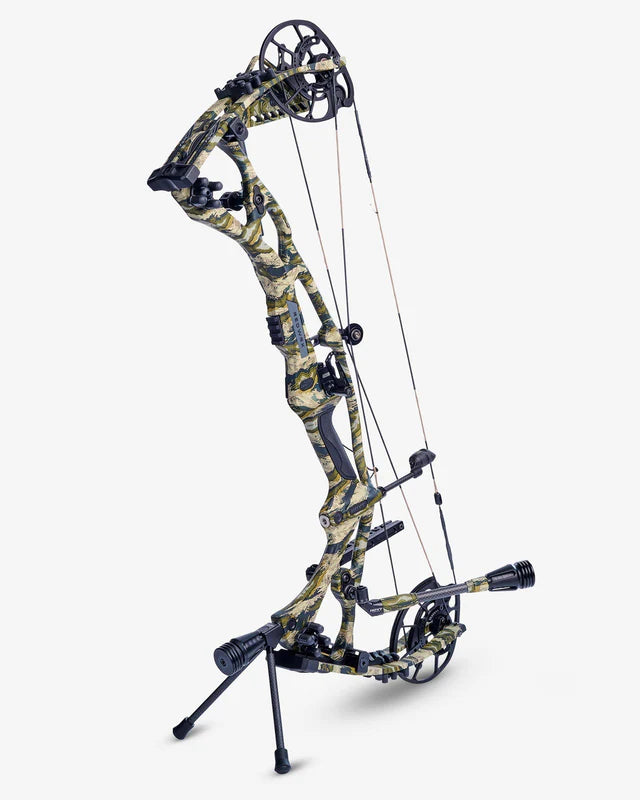How to Choose the Right Bow Stabilizer: Expert Tips and Recommendations
Optimize Your Archery Precision With These Bow Stabilizer Techniques
One important aspect that can significantly affect your performance is the appropriate use of bow stabilizers. Whether you are a skilled archer looking to refine your skills or a newbie anxious to enhance your precision, understanding these bow stabilizer strategies can be the key to hitting your mark with unparalleled consistency.
Benefits of Utilizing Bow Stabilizers
Utilizing bow stabilizers can substantially improve an archer's precision and total performance by minimizing bow torque and vibration. In addition, bow stabilizers moisten vibration, which not only improves the comfort of shooting but likewise avoids the bow from leaping upon release, thus helping in keeping correct goal.
Furthermore, bow stabilizers can aid in holding the bow constant, specifically throughout windy conditions or when firing from longer ranges. The added weight at the front of the bow offers stability and equilibrium, enabling the archer to focus on aiming without the interruption of bow activity. In general, the benefits of making use of bow stabilizers extend beyond simply accuracy, enhancing the archer's experience and efficiency in different shooting situations.
Choosing the Right Bow Stabilizer
Selecting the proper bow stabilizer is critical for optimizing your archery devices and improving shooting efficiency. When selecting a bow stabilizer, there are a number of variables to think about to guarantee you find the appropriate suitable for your demands. First of all, think about the weight of the stabilizer. Much heavier stabilizers can help in reducing bow torque and take in even more vibration, bring about a steadier goal. Lighter stabilizers offer more maneuverability, which can be advantageous in particular shooting situations.

Last but not least, consider the design of the stabilizer. Some stabilizers feature flexible weights or dampeners that allow you to personalize the balance and feel of your bow. Inevitably, selecting the ideal bow stabilizer involves discovering an equilibrium in between weight, design, product, and size to boost your shooting accuracy and general efficiency.
Proper Installment Methods
To ensure ideal performance and security in archery, understanding proper installation techniques for your bow stabilizer is important. The initial action in mounting a bow stabilizer is to recognize the appropriate placement on your bow.
Following, safely attach the stabilizer to the bow making use of the proper installing hardware. Some stabilizers come with flexible weights that can be included or removed to fine-tune the equilibrium of your bow.

Adjusting Stabilizer Weight and Length
After making certain the correct installment of your bow stabilizer, the following action entails readjusting he said the weight and size to maximize its efficiency in improving archery precision. The weight of the stabilizer plays a critical function in lessening bow activity throughout the shot cycle.
A longer stabilizer can offer greater security by boosting the distance in between the bow and the weight at the end of the stabilizer. On the other hand, a shorter stabilizer provides much more ability to move and might be chosen by archers that value agility and quick motions during capturing.
Advanced Stabilizer Tuning Tips
Attaining optimal bow security and precision in archery demands a nuanced method to advanced stabilizer adjusting. Advanced stabilizer tuning entails fine-tuning various parts to improve the bow's equilibrium, decrease vibration, and enhance overall precision. One key strategy is to experiment with various stabilizer setups, consisting of side-bar and back-bar setups, to discover the optimal equilibrium between security and maneuverability for your capturing design. bow stabilizer. Furthermore, readjusting the angle and positioning of the stabilizer can have a significant influence on how the bow reacts upon release.
One more critical aspect of sophisticated stabilizer adjusting is maximizing the damping homes of the stabilizer system. This can be attained by incorporating additional moistening devices such as rubber dampeners or harmonic stabilizers go to better reduce vibration and noise. Checking out various products for the stabilizer building and construction, such as carbon fiber or light weight aluminum, can additionally affect the bow's efficiency by altering its weight distribution and stiffness. By meticulously tweak these sophisticated stabilizer aspects, archers can maximize their accuracy and consistency on the range or in competition.
Conclusion
In conclusion, optimizing archery accuracy can be attained through the correct choice, installment, and modification of bow stabilizers. Overall, including bow click here to find out more stabilizers into archery technique can lead to improved efficiency and increased precision.
Using bow stabilizers can substantially enhance an archer's precision and overall performance by decreasing bow torque and vibration. Longer stabilizers give better stability and equilibrium, especially for long-distance shooting, while much shorter stabilizers provide even more versatility and are less complicated to navigate in limited spaces (bow stabilizer). Carbon fiber stabilizers are lightweight and sturdy, while aluminum stabilizers are durable and give outstanding resonance wetting
A longer stabilizer can offer higher security by increasing the distance in between the bow and the weight at the end of the stabilizer.Another important facet of advanced stabilizer tuning is optimizing the damping residential or commercial properties of the stabilizer system.